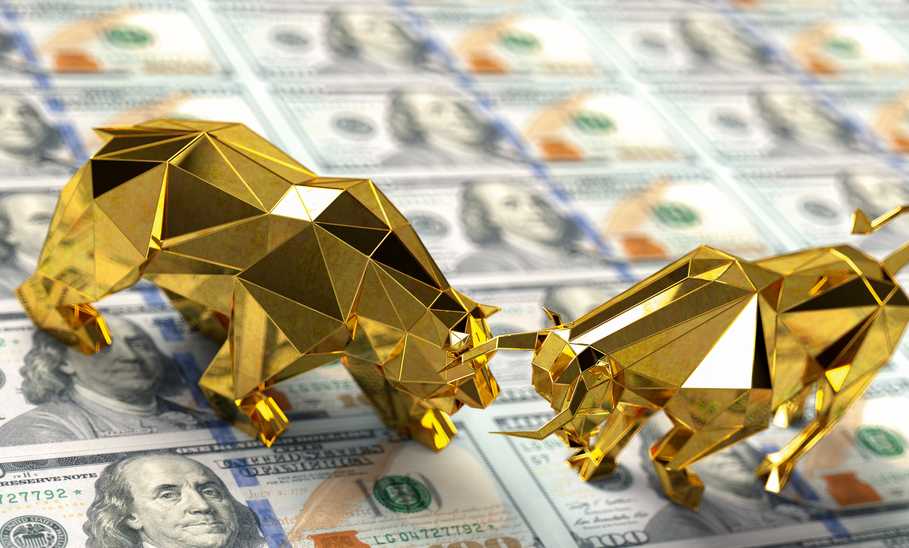What Is A Bull Market? Definition, Characteristics and Tips on How to Invest.

Our evaluations and opinions are not influenced by our advertising relationships, but we may earn a commission from our partners’ links. This content is created by TIME Stamped, under TIME’s direction and produced in accordance with TIME’s editorial guidelines and overseen by TIME’s editorial staff. Learn more about it.
Everyone loves when the market is doing well and stocks and bonds prices are on the rise. This is commonly referred to as a bull market.
A bull market occurs when financial markets rise for a period of time and this can last anywhere from months to years. This type of market gives investors confidence as they may see more returns with their portfolios.
While bull markets don’t always necessarily mean that there won’t be slight dips in the market, it does indicate steady financial growth as the value of stocks and bonds tend to trend upward overall.
Understanding how a bull market works including some realistic ways to invest during those seasons can help you grow your investments with confidence.
When most people think of a bull, they probably visualize a strong animal charging forward. Metaphorically, this is how the market tends to perform when the economy is doing well and unemployment is low.
Bulls also tend to thrust their horns into the air, symbolizing the rise in the stock market. Common investor jargon also uses the word “bull” to describe someone who buys securities in the expectation of a price increase.
There have been plenty of bull markets throughout history. One of the most recent bull markets began in 2009 after the Great Recession and lasted for several years until the Covid-19 pandemic shut the economy down in March 2020.
When you view historical charts that measure the rise and fall of the stock market, you’ll see clear rising slopes over time that indicate when there was likely a bull market. You’ll also see the percentage growth of stocks and bonds during that time.
Another notable bull market was between 2003 and 2007 when the stock market made a significant increase and the S&P 500 nearly doubled in value over this period.
A bull market tends to occur when there’s a price increase on securities of more than 20% after a period of decline. During bull markets, there’s also more trading activity since more investors are willing to buy and hold securities in order to receive capital gains.
Since securities have higher values during a bull market, many investors are willing to pay more for them with the belief that they will appreciate as the market continues to grow. Investors who were holding onto certain stocks and bonds may even consider selling them while the values are high or making a strategic trade.
Another key characteristic of a bull market is more earnings or even shareholder dividends since more companies will be doing well financially.
A bull market is generally a good thing because it can indicate economic growth and optimism among business and consumers. It may also result in equity growth and higher dividends, depending on the stock and the sector.
Bull markets can last anywhere from months to years. The longest bull stock market in American history was from 2009 and 2020. Between the Great Recession and the COVID pandemic, the S&P 500 rose 334% for a 30% annualized return. Some bull markets are shorter and range from three to five years, but the average length is 5.9 years.
The good news is that the past data indicates the market has collectively had more good years than bad years. The length of the average bear market, when an index like the S&P 500 loses 20% or more of its value, is just under a year.
Opposite of a bull market, a bear market is when the market goes down and the value of stocks and bonds decrease. Investors tend to lose value in their portfolio and this also translates to a lack of confidence in the market.
During bear markets, the economy also may not be doing well and certain global events can ever trigger a bear market. While a bull thrusts its horns up to attack, a bear swipes its paws downward. Since 1945, we’ve had a total of 11.3 years of bear markets. While bear markets aren’t the most exciting times for investors, it could present a great opportunity to buy securities for less while the value is lower.
Then, when the market goes back up or another bull market comes around, your portfolio will experience growth and the earnings will increase.
There are a few options to consider when investing in a bull market. While each investor’s strategy may vary, here are some common things people do during bull markets.
Dividend stocks are offered through publicly-traded companies that share profits with shareholders through dividends. During a bull market, successful companies that have a consistent history of increasing their dividends are likely to pay out more to shareholders. Dividends are a solid return that you can use either to reinvest in the company or use for income.
If you’re not sure what strategy you should use when investing, SmartAsset offers a free online service to match you with a financial advisor who can offer valuable insight on your financial situation.
If you are investing for the long term (and that is what investing in a bull market is all about) buying and holding stocks is a great way to build wealth. Because bull markets last longer and grow more historically than bear markets, your yearly average returns in the stock market will generally outpace inflation and grow your assets.
To get the most return with lower risk and low fees, many investors choose index funds or ETFs that hold stocks in popular indexes like the S&P 500, the Russell 2000, the Dow Jones Industrial Average or the Nasdaq 100.
Roboadvisors are a popular way to make steady contributions to your stock investments in index funds. M1 Finance is an app that uses AI technology to help you select investment kits that align with your personal interest and values. Once you make your selections, you can keep an eye on your portfolio growth in the app.
Since the turn of the 20th century, there have been several bull markets, but no two bull markets are the same. The bull market in stocks that lasted from the end of World War I until the stock market crash of 1929 gave the 1920s their nickname: “the roaring 20s.”
Bull markets usually follow bear markets, which sometimes coincide with catastrophic events like world wars and Great Depressions. A short bull market after the end of World War II lasted from 1949 to 1956, and after a very brief bear market (less than a year) the bull market resumed until 1966.
After the lackluster performance of the 1970s, the stock market entered another bull market in 1982 that lasted until 1989 and marked the 80s as a decade of big hair, shoulder pads, and suspenders on men who traded stocks.
More recently, the 1990s marked another historic period of significant market growth. This bull market started in October 1990, lasted for 113 months, and the market experienced a growth rate of 417%.
Early 2020 marked the end of a long bull market and we went into a bear market as the economy worsened during the height of global pandemic. Since then, the market began improving and financial experts predicted that we were no longer in a bear market as of early 2023.
However, that does not necessarily mean we are currently in a raging bull market right now. Remember, the stock market needs to increase by about 20% after a period of sharp decline to be named an official bull market.
With inflation, consistent layoffs, and other economic issues this year, people are understandably cautious about hoping for a major market rebound. Still, history reminds us that the next bull market could be just around the corner.
The information presented here is created by TIME Stamped and overseen by TIME editorial staff. To learn more, see our About Us page.



